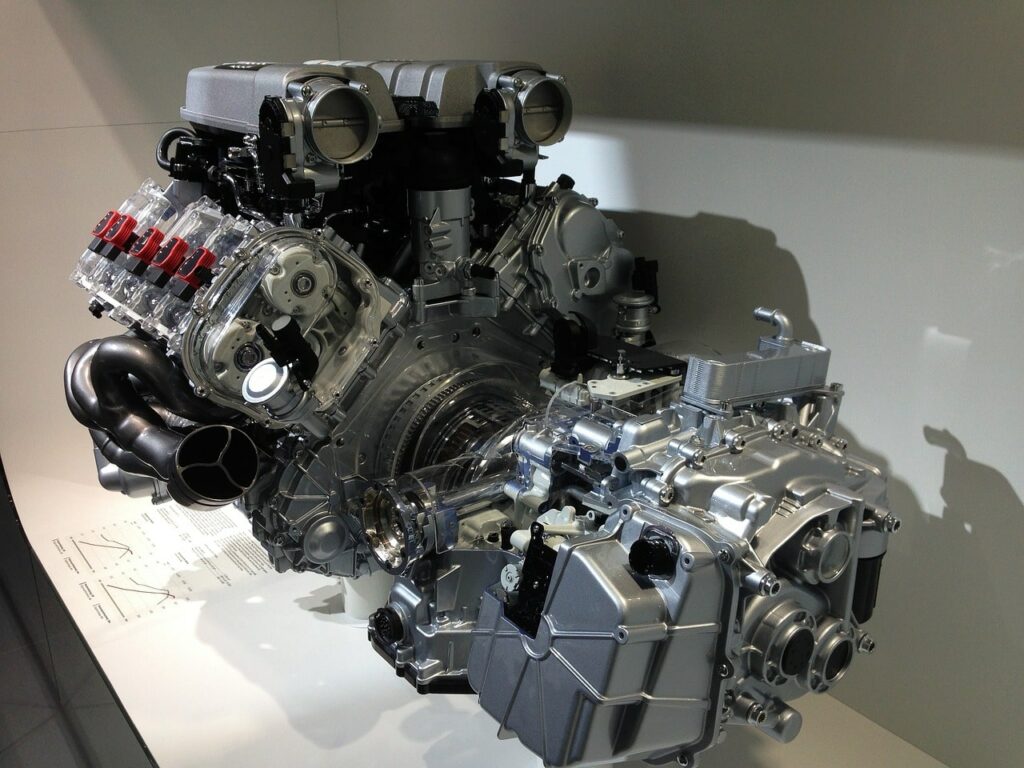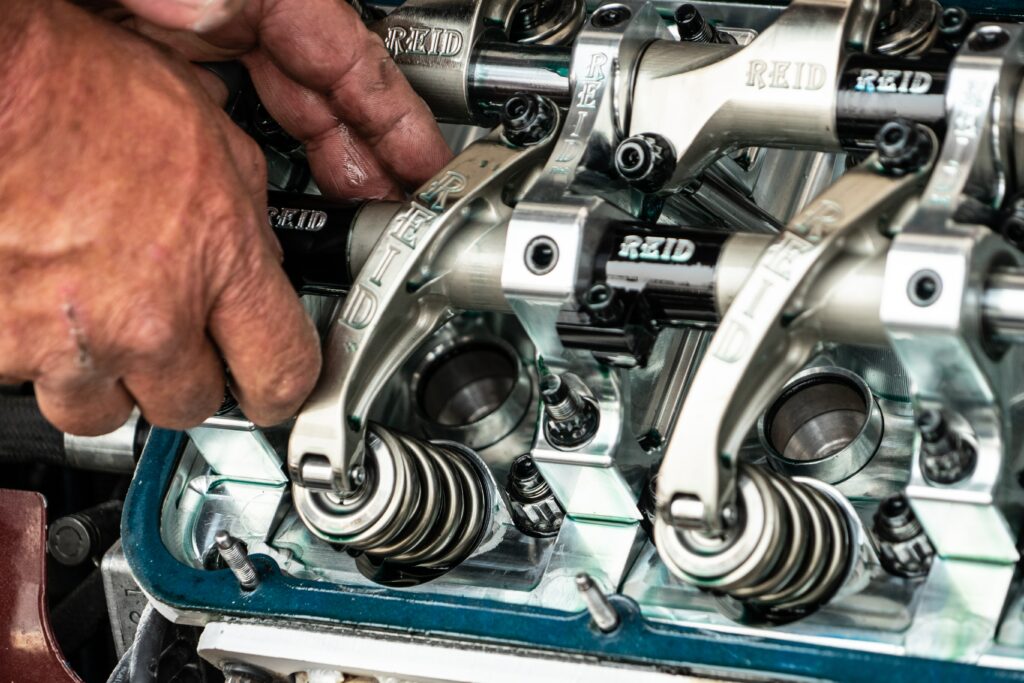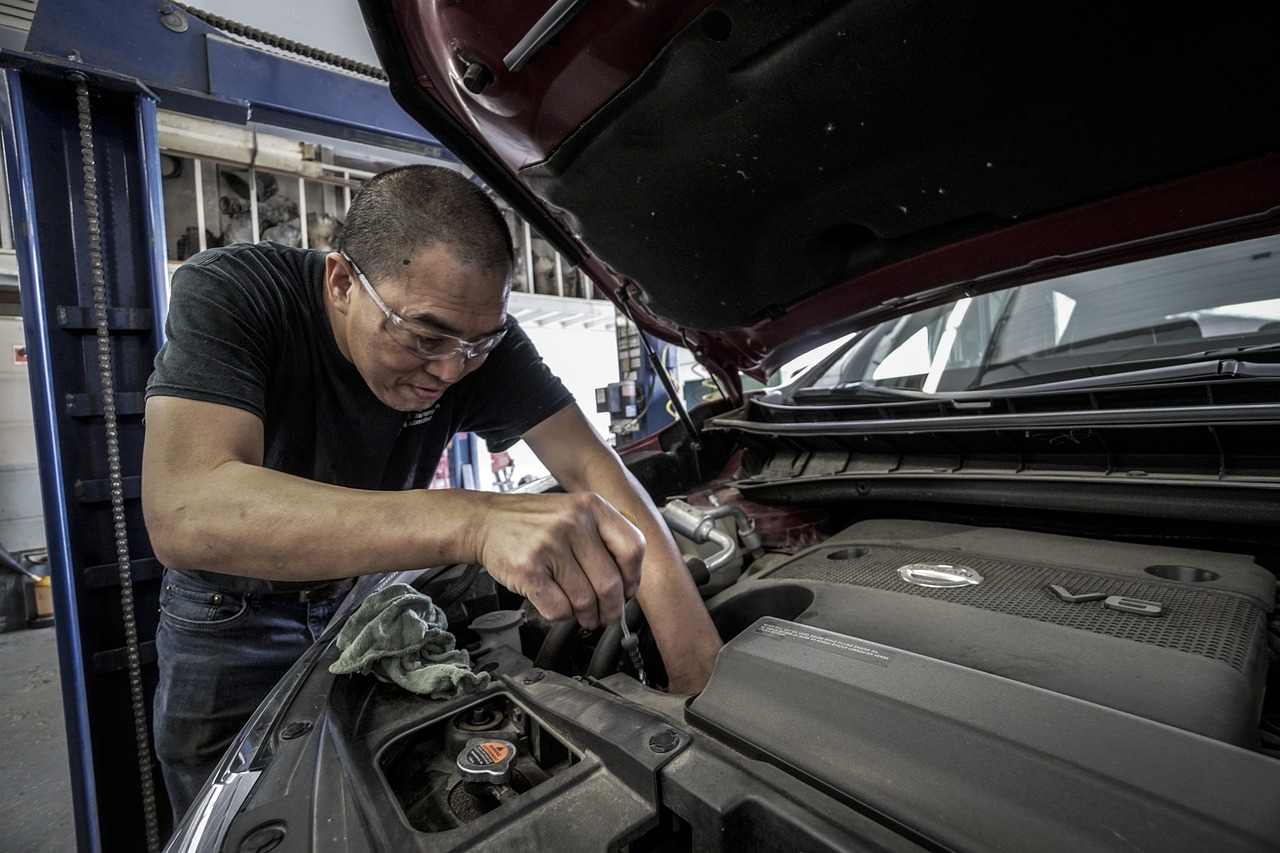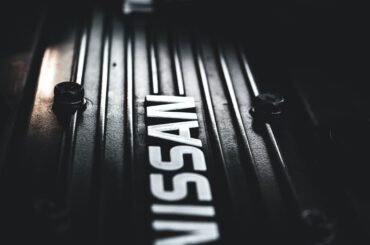As car owners, it’s crucial to know “What are 7 symptoms of engine mechanical problems?” Recognizing these warning signs empowers us to take proactive measures in maintaining our engine’s health and safeguarding the overall well-being of our beloved vehicles. From strange noises and excessive smoke to loss of power and engine misfires, these symptoms can be early indicators of underlying issues that may lead to more severe complications and costly repairs. Understanding and addressing these signs promptly will ensure that our cars operate smoothly and efficiently, prolonging their performance and reliability.
Contents
Strange Noises
One of the telltale signs of potential engine mechanical problems is the emergence of strange and unusual noises from under the hood. As drivers, we are familiar with the regular hum of a well-functioning engine, making any new and peculiar sounds cause for concern.

Common Engine-Related Sounds:
1. Knocking: A knocking sound resembles metal striking metal, indicating issues like worn-out bearings, connecting rods, or crankshaft components. This noise suggests that there might be inadequate lubrication or excessive clearance between moving parts.
2. Tapping: Tapping or ticking noises are often associated with valvetrain issues. Worn-out valve lifters, pushrods, or rocker’s arms can create this sound when they fail to maintain proper contact, causing valve lash.
3. Grinding: A grinding noise can indicate a problem with the transmission, but it can also arise from issues within the engine itself. Worn-out gears, damaged bearings, or a failing starter motor can produce this unsettling sound.
4. Rattling: Rattling noises often point to loose components within the engine. Loose heat shields, a loose timing chain, or a failing water pump impeller could cause it.
Possible Causes and Implications:
– These strange noises are not mere annoyances; they can have severe implications for the engine’s health and overall performance. Ignoring them might lead to catastrophic engine failure or further damage, resulting in expensive repairs.
– Knocking and tapping sounds can indicate internal wear and tear, which, if left unattended, can cause a domino effect on other engine components, reducing efficiency and power.
– Grinding noises may indicate impending transmission or engine failure, and immediate attention is necessary to prevent further damage and ensure safe operation.
– Rattling sounds may seem harmless, but they can be early warnings of critical issues that require immediate investigation and resolution to avoid major breakdowns.
Excessive Smoke
Excessive smoke billowing from the exhaust pipe is an alarming sign that demands immediate attention from vehicle owners. Smoke coming out of the tailpipe indicates potential engine problems and poses a serious threat to the environment and the engine’s health.
Different Smoke Colors and Their Associated Issues:
1. Blue Smoke: Blue smoke is often a result of burning engine oil. This could be due to worn piston rings, damaged valve seals, or a faulty PCV (Positive Crankcase Ventilation) system. When oil enters the combustion chamber, it gets burned along with the fuel, producing blue-tinted smoke.
2. White Smoke: White smoke usually indicates the presence of water or coolant in the combustion chamber. This can be a sign of a blown head gasket, a cracked cylinder head, or a damaged intake manifold gasket. Coolant mixes with the fuel, and air creates white smoke upon combustion.
3. Black Smoke: Black smoke is associated with a rich fuel mixture, with excess fuel relative to air. A malfunctioning fuel injection system, a clogged air filter, or a faulty airflow sensor can cause this. The incomplete combustion of fuel leads to the production of black smoke.
How Each Type of Smoke Can Point to Specific Engine Problems:
– Blue smoke hints at potential internal engine issues, such as worn-out piston rings or valve seals. Unaddressed can lead to decreased engine performance, increased oil consumption, and reduced overall efficiency.
– White smoke is a critical indication of possible cooling system problems or internal engine damage. A blown head gasket or cracked cylinder head, if not repaired promptly, can cause severe engine overheating and potentially catastrophic failure.
– Black smoke suggests a problem in the fuel delivery system, leading to inefficient combustion. This reduces fuel efficiency and contributes to higher emissions, harming both the engine and the environment.
Loss of Power
Experiencing a sudden or gradual loss of engine power can be frustrating and concerning for any driver. Engine power is the driving force behind a vehicle’s performance, and any power reduction can significantly affect the overall driving experience.
Emphasizing the Impact of Engine Power Loss:
Engine power is directly responsible for accelerating, climbing hills, and maintaining steady speeds on the road. When power diminishes, the vehicle’s ability to respond promptly to driver inputs is compromised. This can lead to sluggish acceleration, reduced towing capacity, and an overall lack of responsiveness, impacting safety and driving pleasure.
Potential Reasons for Decreased Power:
1. Low Compression: Low compression in one or more cylinders can result from worn piston rings, damaged valves, or a blown head gasket. Insufficient compression hampers the efficient combustion of fuel, leading to reduced power output.
2. Clogged Air Filter: An air filter clogged with debris, dirt, or dust restricts the airflow into the engine, affecting the air-fuel mixture. This results in a lean fuel mixture, reducing engine power and efficiency.
3. Fuel System Issues: Problems with the fuel delivery system, such as a clogged fuel filter or malfunctioning fuel injectors, can disrupt the proper fuel supply to the engine. Inadequate fuel delivery can lead to power loss and poor engine performance.
Examples of How Engine Power Affects Driving Experience:
– When merging onto highways or overtaking other vehicles, a loss of engine power can make acceleration sluggish and potentially unsafe, compromising the driver’s ability to merge and maneuver effectively.
– Climbing steep hills or carrying heavy loads becomes challenging with reduced engine power, resulting in slower ascent times and potential strain on the transmission.
– A vehicle with decreased power may struggle to maintain consistent speeds, leading to fluctuations in speed and reduced fuel efficiency during long drives.
– In emergencies, the lack of adequate engine power can hinder the driver’s ability to respond quickly, compromising safety.
Engine Misfires
Engine misfires are disruptive events that occur when the fuel-air mixture in one or more cylinders fails to ignite properly during combustion. This interruption in combustion leads to a momentary loss of power and can significantly affect the engine’s operation and overall performance.
Defining Engine Misfires and Their Effects:
An engine misfire occurs when the spark plug fails to ignite the air-fuel mixture at the right time, resulting in an incomplete combustion cycle. This can lead to rough idling, vibrations, reduced power, and increased exhaust emissions. Misfires disrupt the engine’s smooth operation and can be damaging if left unaddressed.
Role of Spark Plugs, Ignition Coils, and Fuel Injectors in Misfire Occurrences:
1. Spark Plugs: Spark plugs play a critical role in igniting the air-fuel mixture in the combustion chamber. Over time, spark plugs can wear out or become fouled with carbon deposits, leading to weakened or no sparks, causing misfires.
2. Ignition Coils: Ignition coils generate the high voltage required to create a spark at the plugs. A faulty ignition coil can result in inconsistent or weak sparks, leading to misfires.
3. Fuel Injectors: Fuel injectors spray fuel into the combustion chamber in precise amounts. When fuel injectors become clogged or malfunction, they can deliver too much or too little fuel, disrupting the air-fuel ratio and causing misfires.
Potential Consequences of Ignoring Misfires:
– Ignoring engine misfires can lead to a domino effect on other engine components. Continuous misfiring can damage the catalytic converter, resulting in costly repairs.
– Misfires can cause increased fuel consumption, decreased fuel efficiency and higher operating costs.

– Due to the unburnt fuel, misfires can damage the engine’s internal components, such as the pistons, valves, and cylinder walls.
– Misfires can trigger the check engine light, indicating an ongoing issue that requires immediate attention. Ignoring the check engine light can result in missed opportunities for early diagnosis and timely repairs.
Engine Overheating
Engine overheating is a serious issue that demands immediate attention from vehicle owners. When the engine operates at excessively high temperatures, it can lead to severe consequences, affecting its performance and overall longevity.
Stressing the Seriousness of Engine Overheating and its Consequences:
Engine overheating can result from various factors, such as coolant leaks, a malfunctioning cooling system, or a faulty thermostat. When the engine temperature rises beyond its optimal range, it can cause irreversible damage to vital components, leading to costly repairs and potential engine failure.
Identifying Engine Components that Contribute to Overheating Issues:
1. Water Pump: The pump circulates coolant throughout the engine to regulate temperature. If the water pump fails, the coolant won’t flow properly, causing localized overheating and potential damage to the engine.
2. Radiator: The radiator dissipates heat from the coolant as air passes through its fins. A clogged or damaged radiator can impede heat transfer, leading to engine overheating.
3. Head Gasket: The head gasket seals the engine’s cylinders, ensuring that coolant and oil remain separate. A blown head gasket can mix coolant and oil, causing overheating and potential engine damage.
Describing the Impact of Prolonged Overheating on Engine Longevity:
Prolonged engine overheating can lead to a range of issues that significantly shorten the engine’s lifespan:
– Warped Cylinder Head: The excessive heat can cause the cylinder head to warp, compromising its ability to seal properly and leading to further coolant leaks.
– Piston Damage: High temperatures can cause the pistons to expand beyond their designed tolerances, resulting in scoring and reduced engine compression.
– Cracked Engine Block: The extreme heat can cause the engine block to crack, leading to coolant leaks and further overheating problems.
– Oil Breakdown: Overheating can degrade engine oil, reducing its lubrication properties and accelerating wear on internal engine components.
– Increased Wear: Prolonged overheating leads to accelerated wear on various engine parts, including bearings, camshafts, and valves, reducing the engine’s overall durability.
Increased Oil Consumption
Monitoring engine oil consumption is a critical aspect of vehicle maintenance, as it provides valuable insights into the engine’s health and helps prevent potential issues. When a vehicle exhibits increased oil consumption, it can indicate underlying problems that require attention.
Significance of Monitoring Engine Oil Consumption:
Engine oil is essential for lubricating moving parts, reducing friction, and dissipating heat within the engine. Regularly checking oil levels and monitoring consumption allows us to detect abnormal oil loss, which could signal internal engine problems. Neglecting to address increased oil consumption can lead to severe engine damage and compromise the overall performance and longevity of the vehicle.
Common Causes of Increased Oil Usage:
1. Worn Piston Rings: The piston rings create a seal between the piston and the cylinder wall, preventing oil from entering the combustion chamber. Worn piston rings can allow oil to leak into the combustion chamber, resulting in increased oil consumption.
2. Valve Seals: Valve seals are responsible for sealing the valve stems, preventing oil from entering the combustion chamber. Damaged or worn valve seals can lead to oil leakage and increased consumption.
3. PCV (Positive Crankcase Ventilation) System: A malfunctioning PCV system can cause excessive pressure inside the engine, leading to oil leaks and increased oil usage.
Importance of Addressing Oil Consumption Promptly:
– Ignoring increased oil consumption can lead to low oil levels, which can cause inadequate lubrication and accelerated wear on engine components, potentially resulting in costly repairs.
– Oil consumption can lead to higher emissions and environmental pollution, as unburnt oil in the combustion process can increase smoke and harmful pollutants.
– Continual oil loss can impact engine efficiency and fuel economy, leading to higher operating costs.
– Resolving oil consumption issues promptly can prevent further damage to vital engine components, ensuring longevity and reliability.
Vibrations
Vibrations in a vehicle can clearly indicate underlying engine problems that require attention. Detecting and addressing these vibrations promptly ensures the engine’s health and overall driving experience.
How Vibrations Can Indicate Engine Problems:
Vibrations throughout the vehicle, especially while idling or under load, can signal various engine-related issues. These vibrations often stem from imbalances or irregularities within the engine’s components, affecting its smooth operation. Identifying the source of the vibrations is crucial in diagnosing potential problems accurately.
Potential Sources of Excessive Vibrations:
1. Engine Mounts: Engine mounts are designed to hold the engine securely in place and dampen vibrations. Worn or damaged engine mounts can result in excessive movement, leading to pronounced vibrations throughout the vehicle.
2. Crankshaft: The crankshaft is vital for converting reciprocating motion into rotational motion. An unbalanced or damaged crankshaft can cause irregular vibrations as it spins, affecting engine performance.
3. Harmonic Balancer: The harmonic balancer, or crankshaft pulley, helps dampen vibrations caused by the crankshaft. A faulty harmonic balancer can lead to increased vibrations in the engine.
4. Engine Components: Other engine components, such as pistons, connecting rods, and camshafts, can also contribute to vibrations if misaligned, worn, or damaged.
How Vibrations Can Lead to Further Damage:
– Vibrations can cause additional stress on engine components, accelerating wear and potentially leading to premature failure.
– Excessive vibrations can affect the overall driving experience, causing discomfort for passengers and impacting vehicle handling and stability.
– If left unaddressed, vibrations can result in a cascade of issues, affecting neighboring systems and components, leading to a more complex and expensive repair process.
– Misaligned or damaged engine components can decrease engine efficiency and performance, reducing fuel economy and reliability.
What are 7 symptoms of engine mechanical problems?
In conclusion, recognizing the seven symptoms of engine mechanical problems is crucial for maintaining the health of our vehicles. Strange noises, excessive smoke, loss of power, engine misfires, engine overheating, increased oil consumption, and vibrations are all red flags that require immediate attention.

Early detection and timely repairs can prevent extensive damage and costly repairs. Ignoring these warning signs can lead to compromised engine performance and reduced reliability on the road.
Regular engine maintenance is key to ensuring optimal vehicle performance and longevity. We can enjoy safer and more reliable driving experiences by staying proactive and addressing issues promptly.
Taking care of our engines means safeguarding our investments and ensuring smooth journeys. So, let’s prioritize our vehicle’s well-being through regular maintenance and attentive care.






